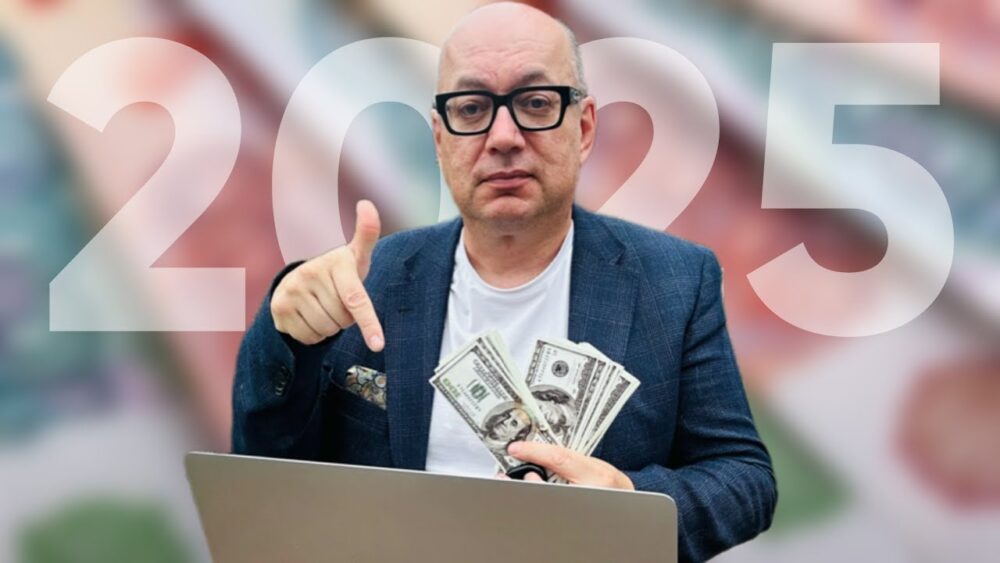Storing money without capital growth often results in loss. Inflation, currency instability, market fluctuations — each factor gradually erodes savings. The difference between those who accumulate and those who multiply money lies not in the initial capital, but in the approach. How to become a successful investor? An experienced specialist does not guess, they act according to a clear system, adapting to any conditions.
How to Become a Successful Investor: Taking the First Step
Every journey begins with a step. How to start investing is not about money, but about preparation. The first stage requires not a million, but order: understanding personal budget, goals, and acceptable risk level. Even 5,000 ₽ invested in the stock market following a strategy provide experience and open the door to long-term investing.

The starting formula:
Financial cushion — covering 3 to 6 months of expenses.
Risk limit per trade — no more than 5% of the invested capital.
Initial assets — simple: ETFs, bonds, blue-chip stocks.
Psychology plays a key role. To stop being afraid and understand how to become a successful investor, one must perceive the market as a system.
Strategy as a Framework: Selection and Adaptation
Anyone planning to study the model of how to become a successful investor develops their own investment strategy, without copying others’ approaches. There is no universal recipe, but three proven directions remain relevant even in crisis conditions:
- Passive long-term investing. Allocating capital for years ahead without frequent operations. The foundation — index funds, dividend stocks, bonds. This approach minimizes the impact of market noise.
- Active trading. Analyzing technical and fundamental indicators, making trades in the short and medium term. Higher profitability, but increased risk and time commitment. Suitable for experienced participants.
- Combined model. The investor builds a stable core portfolio (60–80%) and leaves a portion for more aggressive assets (e.g., IPOs, cryptocurrencies, options). Flexibility ensures stability in volatile stock market conditions.
Market Analysis
How to become a successful investor without analysis? Impossible. The ability to evaluate a company, the economy, macro indicators is the main tool. The stock market relies not on rumors, but on facts.
For example, when evaluating bank stocks, it is important to study:
financial statements according to IFRS (profit, capital, profitability);
share of bad debts;
capital adequacy ratio;
sector growth forecasts.
Analysis also includes geopolitics, economy, central bank rate, tax changes. Even real estate investments require studying the area, price dynamics, rent, building density.
Risk Assessment: Not Losing Is More Important Than Doubling
Every asset carries risk. A successful investor does not avoid it, but controls it. Proper asset management requires a clear balance between risk and return, as well as diversification.
Types of risks:
Market (price decline).
Credit (issuer default).
Currency (exchange rate changes).
Regulatory (restrictions, taxes).
Asset class diversification:
Stocks — growth, dividends.
Bonds — reliability, fixed income.
Real Estate — stability, passive income.
Trading — dynamics, high profitability.
How to preserve capital during market downturns? Use “defensive” assets: gold, short-term bonds, currency. Reduce the share of high-risk instruments, maintain portfolio balance.
How to Become a Successful Investor: Portfolio Management Practice
How often to review an investment portfolio? The answer depends on the strategy. Long-term portfolios require quarterly review. Active ones — daily monitoring. The main thing is not to succumb to emotions.
Structure of a typical balanced portfolio:
| Asset | Share | Yield (average annual) |
|---|---|---|
| S&P 500 Index ETF | 30% | 8–10% |
| Federal Bond Issuance Bonds | 20% | 6–8% |
| Technology Company Stocks | 20% | 12–15% |
| Gold | 10% | 3–6% |
| Real Estate Investment Trusts (REIT) | 10% | 6–9% |
| Free Funds / Cash | 10% | — |
How to Become a Successful Investor: Rules for Beginners
To become a successful investor, it is important to follow a systematic approach. Below are fundamental principles that ensure capital growth without sharp declines:
Clearly define financial goal — retirement, apartment, capital for business.
Start with a minimum amount — from 1,000 to 10,000 ₽, but regularly add to it.
Study the basics — asset types, stock market operation principles, taxation.
Differentiate short-term and long-term goals.
Do not use loans for investments.
Diversify: do not put all money into one asset or sector.
Control emotions — do not panic during downturns.
Check the portfolio according to plan — monthly or quarterly.
Monitor the economy — key rates, GDP, inflation.
Constantly educate yourself — books, courses, practical cases.
When to Start Investing: Age and Moment
The main rule: start not with a large sum, but from the moment when there is a stable income and a basic financial cushion (3–6 months of expenses).
Why Time Is More Important Than Age
Investments are a long-distance game. The most important factor is time in the market, not the “right entry moment.” This is related to the compound interest effect, which works like a “snowball.”
Example:
An investor contributes 5,000 ₽ per month.
Average return — 10% annually.
Horizon — 30 years (from 20 to 50 years old).
After 30 years, the capital will amount to 10,865,500 ₽ (total invested: 1,800,000 ₽ — the rest was “made” by interest). The later the start, the less profit works:

| Start at | Term | Monthly | Return (10% annually) | Total Amount |
|---|---|---|---|---|
| 20 years | 30 years | 5,000 ₽ | 9,065,500 ₽ | 10,865,500 ₽ |
| 30 years | 20 years | 5,000 ₽ | 3,180,000 ₽ | 4,380,000 ₽ |
| 40 years | 10 years | 5,000 ₽ | 430,000 ₽ | 1,030,000 ₽ |
How to Overcome Fear of Investing: Protection Against Mistakes
The initial steps, how to become a successful investor, are often accompanied by anxiety. Fear of losing, choosing the wrong asset, buying at the peak. To overcome the fear of investing, a novice should:
use demo accounts;
<li








 Compared to real estate and bank deposits, shares have the advantage that returns can grow almost indefinitely. Real estate has maintenance costs and deposit income often does not even cover inflation. As the company grows, share prices rise and dividends flow into the account continuously.
Compared to real estate and bank deposits, shares have the advantage that returns can grow almost indefinitely. Real estate has maintenance costs and deposit income often does not even cover inflation. As the company grows, share prices rise and dividends flow into the account continuously. Passive income from stock investments is a real and proven way to achieve financial independence. Securities provide the opportunity to generate stable income that only increases over time due to business growth and reinvestment of payments. Anyone who thinks about their future financial freedom should try this tool. The main thing is to start small, be patient and approach the task strategically. Financial independence through action is possible for anyone who is willing to learn and develop.
Passive income from stock investments is a real and proven way to achieve financial independence. Securities provide the opportunity to generate stable income that only increases over time due to business growth and reinvestment of payments. Anyone who thinks about their future financial freedom should try this tool. The main thing is to start small, be patient and approach the task strategically. Financial independence through action is possible for anyone who is willing to learn and develop.